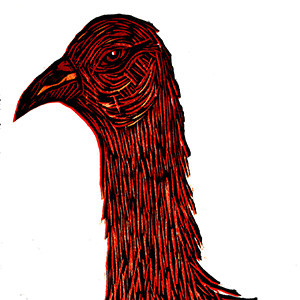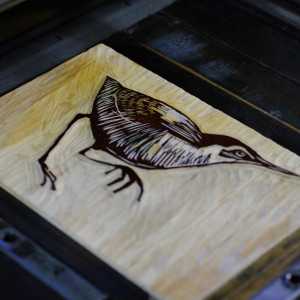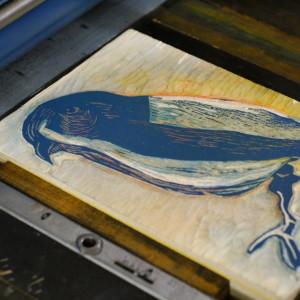The Moa were a family of large ancient flightless birds endemic to New Zealand. The two largest of the nine kinds found there were about 12 feet tall and weighed in at 500 pounds. They had small heads and were completely wingless, lacking even the stubby vestigial wings of other flightless birds,; they were the dominant herbivores in the area. For millions of…
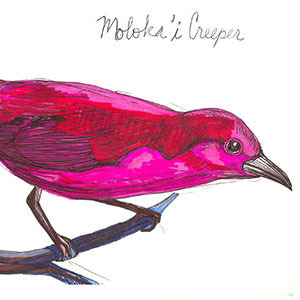
Molokaʻi Creeper
This is a lovely kind of honeycreeper (a kind of small songbird bird endemic to Hawaii), formerly found on the island of Moloka’i. Also known as the Kākāwahie, which means “to break up firewood”; their call reminded listeners of the chip of someone chopping wood. This bird resembled a ball of flame, especially in flight. The males were scarlet red all around. Females had a…
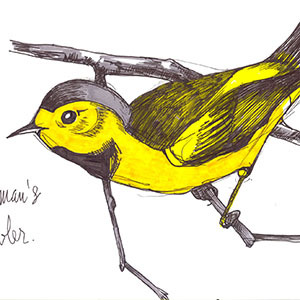
Bachman’s Warbler
Bachman’s Warbler was named after the Reverend John Bachman, a good friend of Audubon’s, who collaborated with him on his second book, Viviparous Quadrupeds of North America, as author of the text. Bachman served as a pastor in Charleston, South Carolina for 56 years, and met Audubon as a result of his ongoing research into local natural history. Audubon visited Charleston…
Color Key to North American Birds
Another step towards the modern field guide happened in 1903, when ornithologist and curator at the American Museum of Natural History Frank Chapman worked with illustrator Chester Reed to produce a book whose sole aim was “the identification of the bird in the bush”. Their Color Key to North American Birds (available here through Project Gutenberg) was the first to rely on…
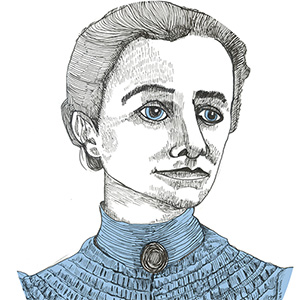
Florence Merriam
Birding in Audubon’s time was about crazed amateurs tramping through an endless American wilderness, determined to draw every bird there was, or at least all the ones they could find. After Audubon his fans began to develop a professional class of bird enthusiasts, and the story behind birding shifted. Ornithology became a discipline, and men like Spencer Fullerton Baird and Elliott Coues began developing departments…
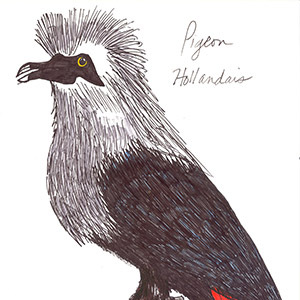
Mauritius Blue Pigeon
An extinct species of blue pigeon formerly native to the Mascarene Island of Mauritius, east of Madagascar in the Indian Ocean. It had stiff, white, pointed hackles around the head, neck and breast and blue plumage on the body, and it was red on the tail and the bare parts of the head. These colours were similar to those of the…
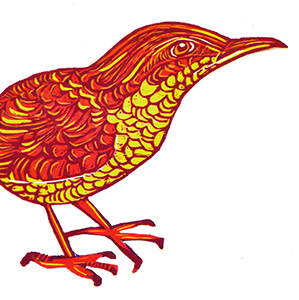
Stephens Island Wren
Stephens Island is a tiny bit of land off the northernmost tip of the South Island of New Zealand. It was called Takapourewa by the Maori. The best known residents of Stephens Island are the tuatara, a rare and exotic species of reptile native to New Zealand, the Stephens Island Wren, a nocturnal and flightless species of wren native only…
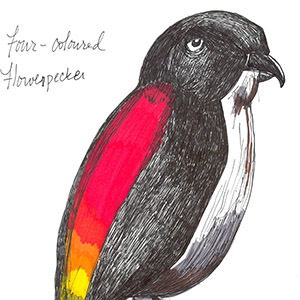
Four Colored Flowerpecker
Otherwise known as the Cebu Flowerpecker. Endemic to Cebu Island in the Philippines. After massive deforestation it was thought to be extinct, but in a late breaking development, this tiny 12 centimeter bird was rediscovered in a small patch of forest in the Central Cebu Protected Landscape, and then subsequently also in a few other scattered bits of forest. The current…

